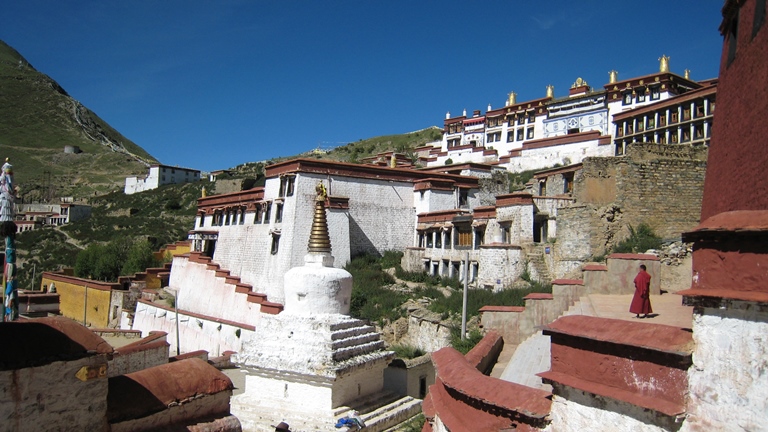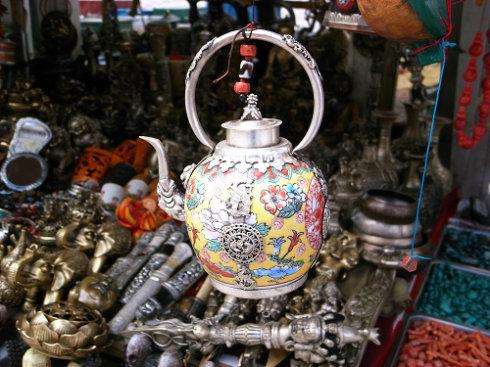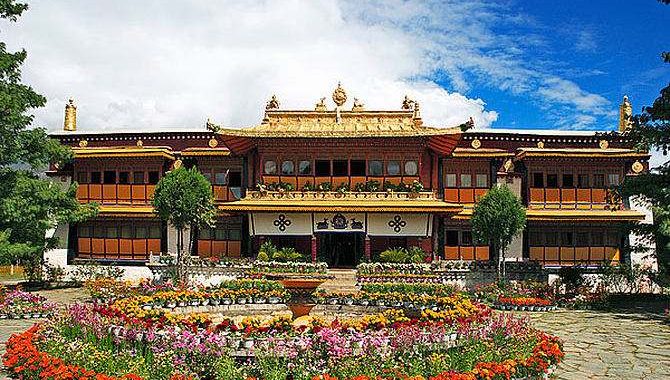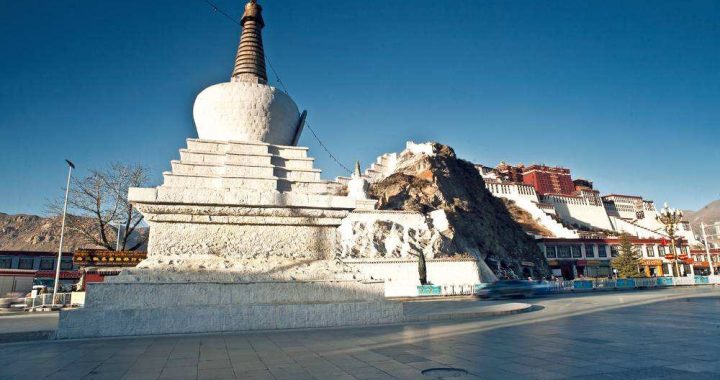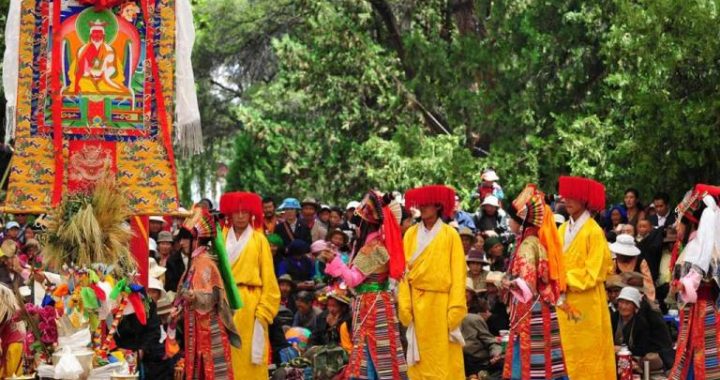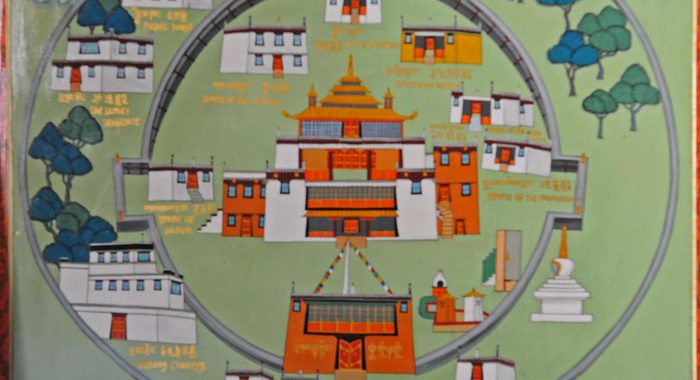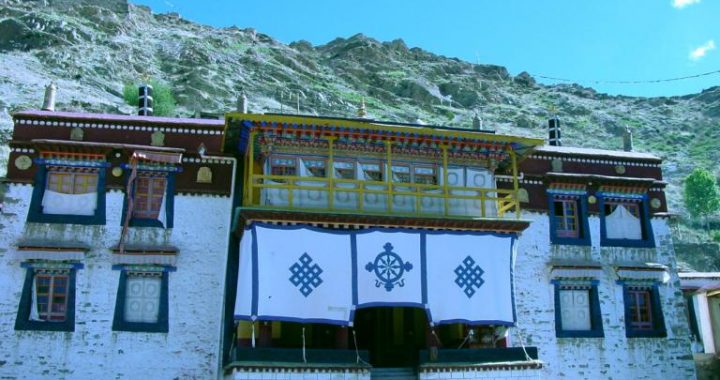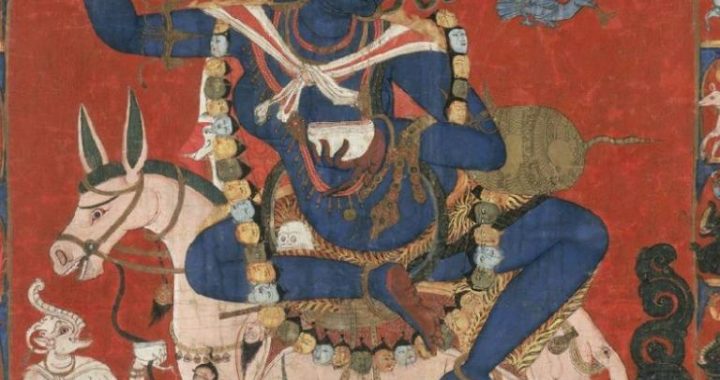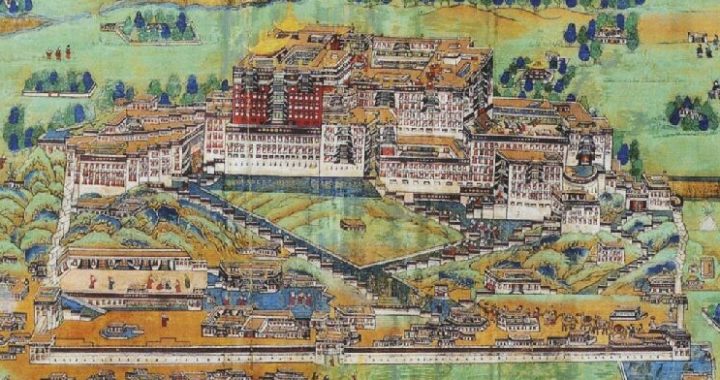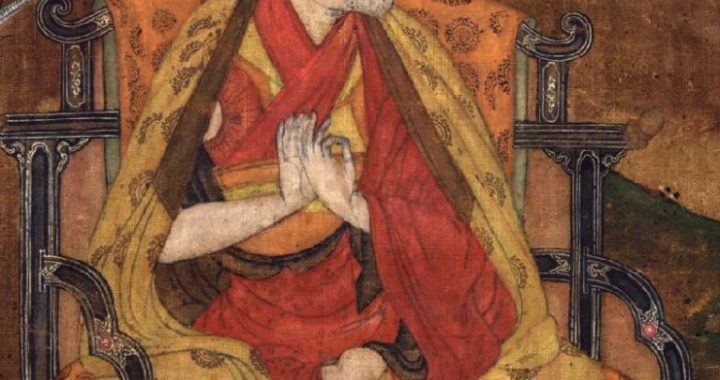The Monastery Converted into Gelug Sect from Kadam Sect
4 min readReting Monastery, also called Gunpalin Manastery, and renamed “Happiness Forever”Monastery by Emperor Qianlong in the 35th year of his reign in the Qing dynasty(1770), is located on Mount Polyamkangqen at Lhunzhub County in Lhasa.I was built in 1056 by Dromton Gyalwa Jungne, the eldest disciple of Atisha as the patriarchal monastery of Kadam sect. But in the beginning of the 15th century afterTsongkhapa established Gelug sect following the doctrines of Kadam sect, Kadam sect was declining while Gelug sect was gaining influences. Under such circumstances Reting Monastery was converted into Gelug sect. During the several hundred years after Reting Monastery was built, the teachings had along been passed down from the master to the disciples. In the beginning of the 16th century when Gelug sect was reformed, the living Buddha reincarnation system was established with the reincarnated soul boy inheriting abbothood. According to The Origin of Tubo Monks, there had been 16 generations of living Buddha at Reting Monastery, but the histori record of this monastery says that it had only six generations of living Buddha.A section of this monatery was damaged in an earthquake in 1951 and suffered further devastation in later years, but now it has been restored.
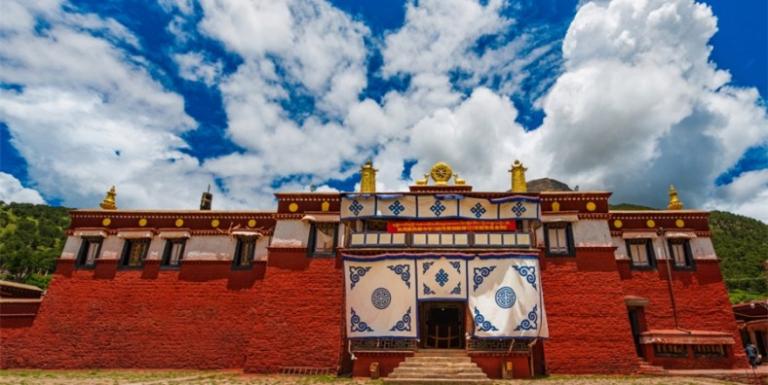
Reting Monastery was established by Dromton Gyalwai Jungnay (1005~1064) who was born in a rich family of Doilungpu of Tsang. When he was young he was bereaved of his mother and later his father remarried. This disagreement between him and his stepmother drove him to follow Saltsun. In 1041 when Dromton Gyalwai Jungnay heard that Atisha was invited by the descent of Tubo Guge Prince to Ngari to spread Buddhism, he bade farewell to Saltsun and headed for Ngari; in 1045 he burned incense at Burang of Ngari and respectfully visited Atisha who performed initiation for him, then he went to Tibet with Atisha to propagate Buddhist doctrines. Before Atisha passed away at Nytang in 1054, he entrusted Dromton Gyalwai Jungnay to carry forward his career. In 1055 after Atisha’s death Dromton arranged Atisha’s funeral and built Nytang Monastery. Soon after, the local leaders of Damxung County in northTibet assembled and sent for Dromton to propagate Buddhism at Reting. Then in early 1056 Dromton led the other disciples of Atisha to Reting and brought along with them the corpse of Atisha. In the same year, Reting Monastery was built and the deadbones of Atisha were kept in the silver stupa of Reting Monastery. With Reting Monastery as the foothold, Kadam sect was developed on the strength of Atisha’s preachings inherited and spread by Dromton Gyalwai Jungnay Facing the south, Reting Monastery consists of the front, middle and back parts occupying more than 16,000 square meters with its main structures being Tsog-chen Ha1l and Reting Lhadrang. The Tsog-chen Hall composed of the Buddhist chapel and th sutra hall has a floor space of 666.7 square meters with the sutra hall being the center of Buddhist activities. The sutra hall is surrounded with many minor sutra halls enshrining a variety of Buddha statues, volumes of sutras and religious articles. Within and without the sutra hall there seems to be a double-layer wall the inner wall is separated by the sutra shelf displaying Gangyur and Tanjur whilethe outer wall is built of stones. Behind the sutra hall is Senkang which served as the living place of Dalai Lama and the regent during their cruise.
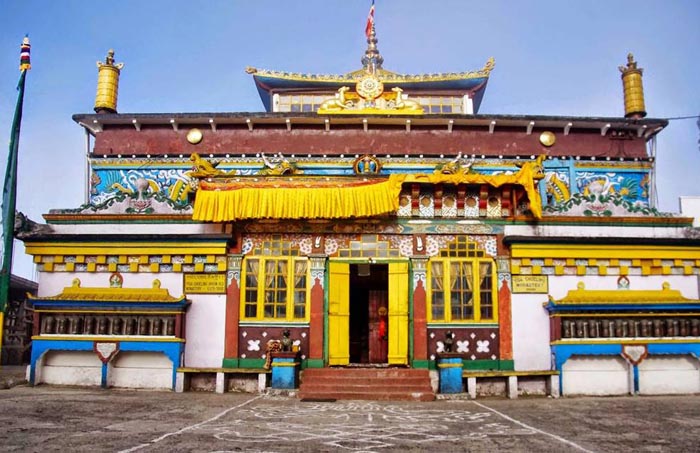
The main statue enshrined in Tsog-chen Hall is “Jonga Jamba Dorje”with “Jonga”meaning “the senior”or “the most revered”as a respectful title to the Buddhist patriarchs.”Jamba Dorje”is an alias of Esoteric Buddhism Guhyasama ja Tantra. This statue was moulded by Vajradhava Wisdom Light with “Vajradhava”referring to the image of Sakyamuni when he expounded Esoteric Buddhism as the master of Esoteric Buddhism and “wisdom light”meaning immaterial light. Accordingto The Record of U-Tsang Monasteries, whoever prays to this statue can be grantedwhatever wish he entertains. The main statue aside, in the Tsog-chen Hall there is the statue of Jonga tilting his head, Indian Pandita Atisa, and the Holy ashes stupa of Dromton. In the west of the hall is Reting Lhadrang which is a private threestory building with the first floor being the warehouse, the second floor the living place of Drasa and chamberlain and the third floor the bedroom of the living Buddhas and the sutra hall.
Reting Monastery boasts many sites of historic interest. Legend has it that wher the main hall was being built the dragon king presented Gold Pillar and Jade Pillar which were used to function as the pillars of the hall. Around this monastery thereare 30,000 ancient cypresses over 1,000 years old on the average which are said to be the soul trees of Dromton Gyalwai Jungnay. It is also said that Avalokitesvara cultivated himself on Mount Polyamkangqen and after his fulfillment he had his hair shaved and he was turned into a cypress which would never wither; there is the sweetened stream and thatched cottage behind the monastery in the lion mountain where Tsongkhapa compiled The Graduated Path to Enlightenment in isolation.All these sites are frequented by respectful Buddhism believers.
West to the Reting Monastery is the “fantastic grassland with magic stones and palaces”meaning fabulous monasteries on the grassland. Legend has it that on the grassland there were 100,000 outlandish boulders and the grassland was respectfully regarded as the palace of Cakrasamvara and one hundred thousand Dakinis. It is also said that in Lamaism’s first propagation period the founder of Nyingma sect Padmasambhava once practiced Buddhism with his consort Dakini Yeshe Tsogyal, then Padmasambhava required her to carry forward Esoteric Buddhism by directly enlightening those concerned.
